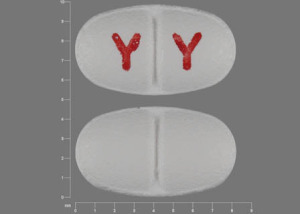Xyzal Dosage
Generic name: LEVOCETIRIZINE DIHYDROCHLORIDE 5mg
Dosage form: tablet, film coated, oral solution
Drug class: Antihistamines
Medically reviewed by Drugs.com. Last updated on Jul 22, 2025.
XYZAL is available as 2.5 mg/5 mL (0.5 mg/mL) oral solution and as 5 mg breakable (scored) tablets, allowing for the administration of 2.5 mg, if needed. XYZAL can be taken without regard to food consumption.
2.1 Perennial Allergic Rhinitis
Children 6 months to 2 Years of Age
The recommended initial dose of XYZAL is 1.25 mg (1/2 teaspoon oral solution) (2.5 mL) once daily in the evening. The 1.25 mg once daily dose should not be exceeded based on comparable exposure to adults receiving 5 mg.
2.2 Chronic Idiopathic Urticaria
Adults and Children 12 Years of Age and Older
The recommended dose of XYZAL is 5 mg (1 tablet or 2 teaspoons [10 mL] oral solution) once daily in the evening. Some patients may be adequately controlled by 2.5 mg (1/2 tablet or 1 teaspoon [5 mL] oral solution) once daily in the evening.
Children 6 to 11 Years of Age
The recommended dose of XYZAL is 2.5 mg (1/2 tablet or 1 teaspoon [5 mL] oral solution) once daily in the evening. The 2.5 mg dose should not be exceeded because the systemic exposure with 5 mg is approximately twice that of adults.
Children 6 months to 5 Years of Age
The recommended initial dose of XYZAL is 1.25 mg (1/2 teaspoon oral solution) (2.5 mL) once daily in the evening. The 1.25 mg once daily dose should not be exceeded based on comparable exposure to adults receiving 5 mg.
Dose Adjustment for Renal and Hepatic Impairment
In adults and children 12 years of age and older with:
- Mild renal impairment (creatinine clearance [CLCR] = 50-80 mL/min): a dose of 2.5 mg once daily is recommended;
- Moderate renal impairment (CLCR = 30-50 mL/min): a dose of 2.5 mg once every other day is recommended;
- Severe renal impairment (CLCR = 10-30 mL/min): a dose of 2.5 mg twice weekly (administered once every 3-4 days) is recommended;
- End-stage renal disease patients (CLCR <10 mL/min) and patients undergoing hemodialysis should not receive XYZAL.
No dose adjustment is needed in patients with solely hepatic impairment. In patients with both hepatic impairment and renal impairment, adjustment of the dose is recommended.
Frequently asked questions
- Is it OK to take antihistamines every day?
- Is Xyzal available over-the-counter?
- Which antihistamines make you drowsy?
More about Xyzal (levocetirizine)
- Check interactions
- Compare alternatives
- Pricing & coupons
- Reviews (286)
- Drug images
- Latest FDA alerts (2)
- Side effects
- During pregnancy
- Support group
- FDA approval history
- Drug class: antihistamines
- Breastfeeding
- En español
Patient resources
Professional resources
Related treatment guides
See also:
Further information
Always consult your healthcare provider to ensure the information displayed on this page applies to your personal circumstances.


